USS Maryland
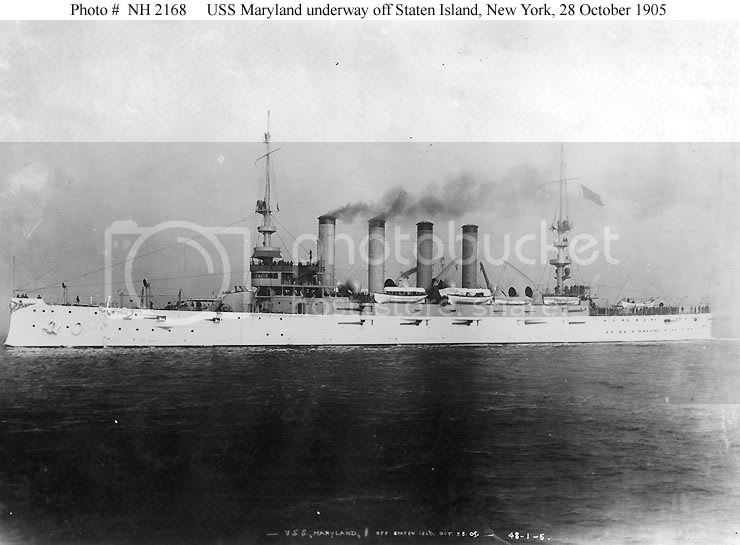
General Statistics
Displacement: 13,680 tons
Length: 504 feet
Beam: 69 6 in feet
Draft: 26 1 in feet
Speed: 22. knots
Complement: 830 officers and men
Armament: 4 x 8 inch guns
14 x 6 inch guns
18 x 3 inch guns
The USS Maryland (ACR-8), was a United States Navy Pennsylvania-class armored cruiser.
She was laid down by the Newport News Shipbuilding & Dry Dock Company, Newport News, Virginia, 7 October 1901, launched 12 September 1903, sponsored by Miss Jennie Scott Waters; and commissioned 18 April 1905, Capt. R. R. Ingersoll in command.
This is a picture taken on the 12th of September 1903 of the Maryland being prepared for launching that day at Newport News Shipbuilding and Drydock. Note that the portholes have not been cut into her hull.
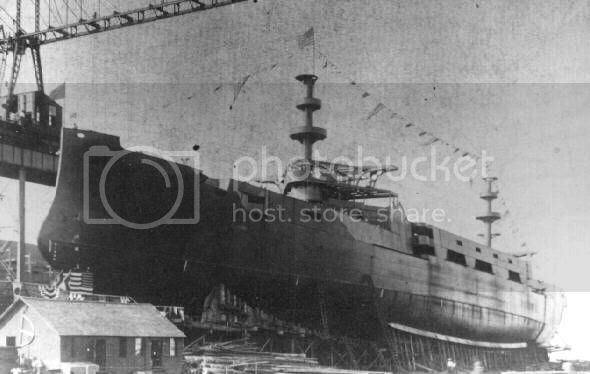
Heres another picture of the Maryland “in drydock”
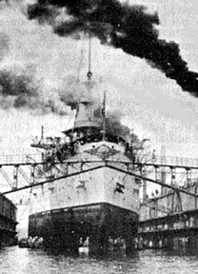
In October 1905, following shakedown, Maryland joined the U.S. Atlantic Fleet for operations along the East Coast and in the Caribbean, where she took part in the 1906 winter maneuvers off Cuba. The next summer, she conducted a training cruise for Massachusetts Naval Militiamen, and then readied for transfer to the Pacific. Departing Newport 8 September 1906, she sailed, via San Francisco and Hawaii, for the Asiatic Station where she remained until October 1907.
This picture is “taking it green” over the bow while steaming through agale in the South China Sean on the 6th of March.
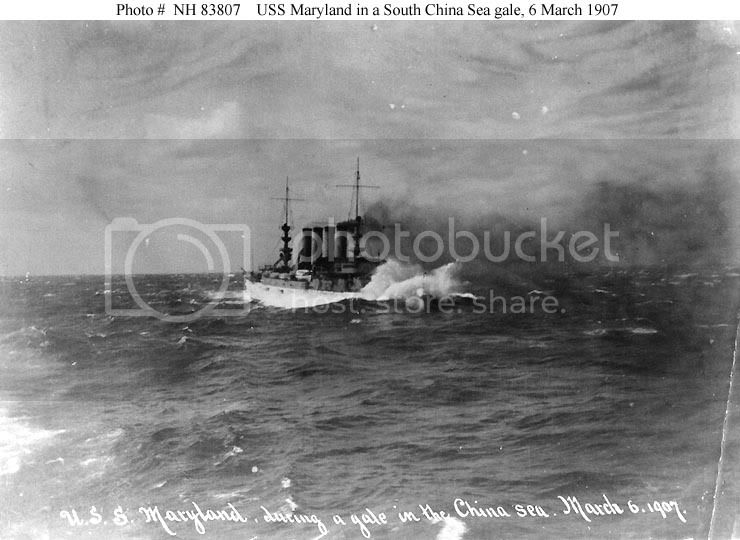
She then returned to San Francisco and for the next decade she cruised throughout the Pacific, participating in survey missions to Alaska (1912 and 1913); carrying United States Secretary of State Knox to Tokyo for the funeral of Emperor Meiji Tenno (September 1912); steaming off the Central American coast to aid, if necessary, Americans endangered by political turmoil in Mexico and Nicaragua (1913, 1914, and 1916); and making numerous training cruises to Hawaii and the South-Central Pacific.
Here is a great picture of the Maryland in dry dock at Puget Sound navy yard, Bemerton, Washington on the 23rd of April 1908. Check out the freshly painted underwater hull and bow decoration.

A picture in the drydock with crewmen scraping barnacles of her hull in preparation for painting circa 1911
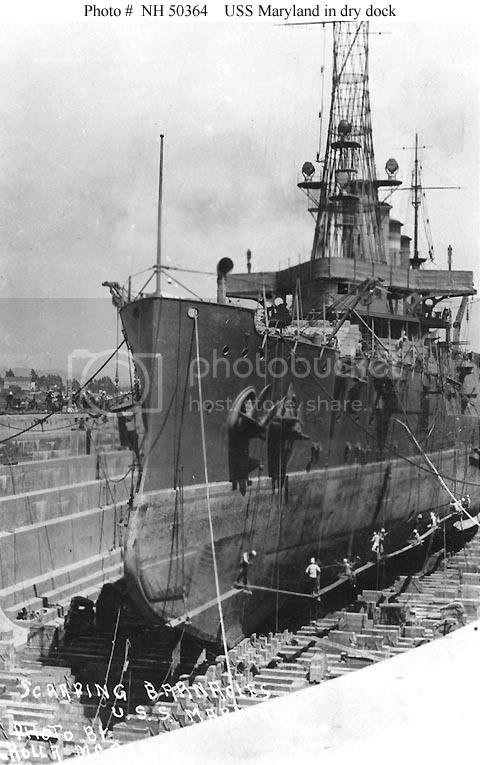
A picture in the drydock with sailors at work cleaning the port propeller circa 1911
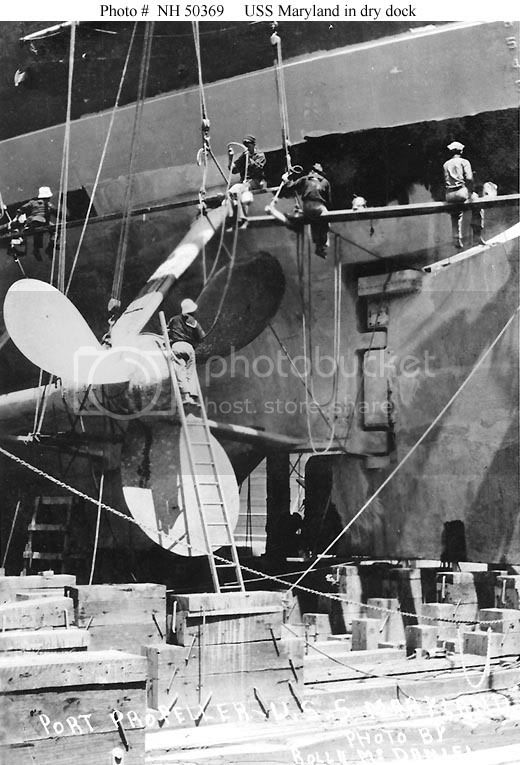
Here she is in drydock with her bottom cleaned and freshly painted circa 1911
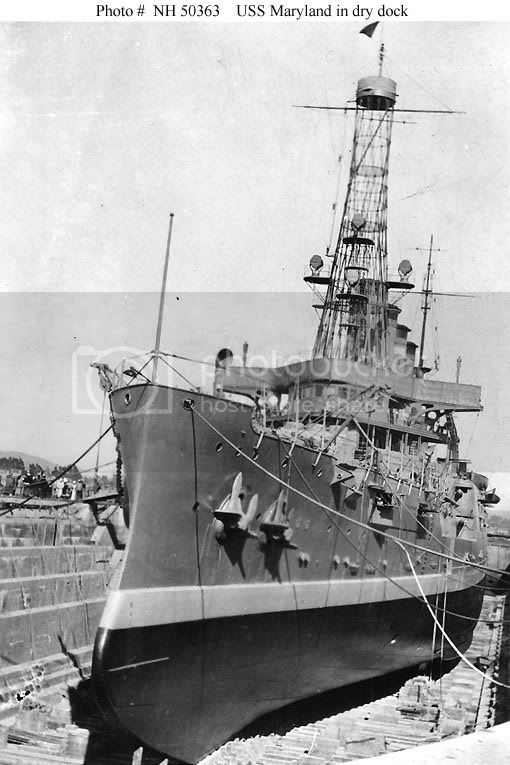
When the United States Congress declared war on Germany, 6 April 1917, the armored cruiser USS Maryland, but by then renamed Frederick on 9 November 1916, was en route from Puget Sound to San Francisco. Taking on men and supplies at the latter port, she got underway for the Atlantic. From May 1917 through January 1918, she patrolled the southeastern Atlantic off the coast of South America. On the1st of February, she was assigned to escort duty in the North Atlantic and until the signing of the Armistice she convoyed troopships east of the 37th meridian. By the 20th of November, she was attached to the Cruiser and Destroyer Force and before mid-1919 had completed six round trips returning troops from France. Detached from that duty, she entered the Philadelphia Navy Yard where she was briefly placed in reduced commission.
A picture of the USS Maryland starboard view 1919

Frederick crossed the Atlantic again, carrying the US Olympic Team to Antwerp, Belgium, as she conducted a naval reservist training cruise in July of 1920. At the end of that year she returned to the Pacific Fleet. Serving as flagship of the Train, Pacific Fleet, for the next year, she conducted only one lengthy cruise, to South America in March 1921. Operations off the West Coast took up the remainder of her active duty career and on the14th of February 1922 she was decommissioned and entered the Reserve Fleet at Mare Island. She was struck from the Naval Vessel Register on the13th of November 1929 and sold on the11th of February 1930.
Here is a rather sad picture of the USS Maryland moored alongside the USS Rhode Island at Mare Island in 1922. Both ships were decommissioned at this stage.

By way of an interesting aside in 1921, the Frederick was used for several scenes in Harold Lloyd's first full-length film, the comedy A Sailor-Made Man. Camera (vol. 4, no. 29, p.
 mentions a dinner party for the cast that was given by the officers of the ship.
mentions a dinner party for the cast that was given by the officers of the ship.Cheers
Sean













